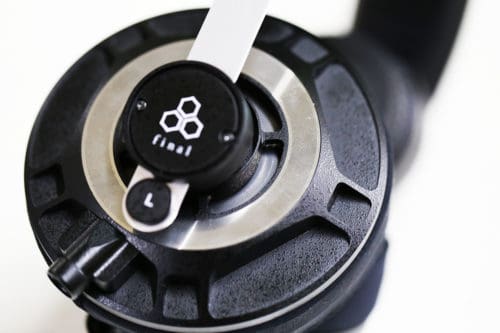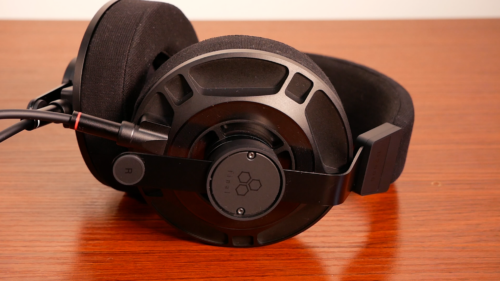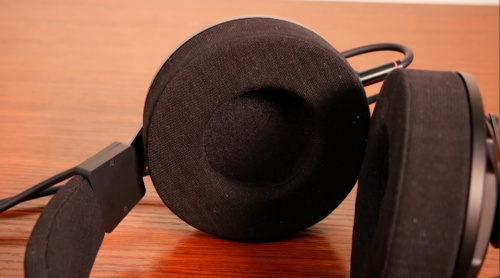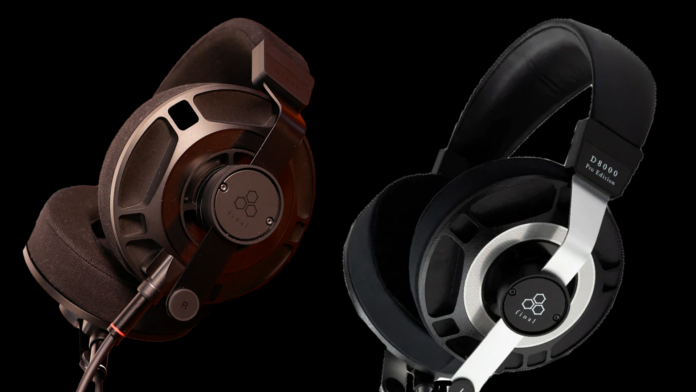This year’s Can Jam marked the arrival of a new headphone from Final Audio: the D7000. You can read our review of the D7000 here, but for now, we wanted to do a comparison of the new headphone and its older brother, the D8000 Pro. There are some big differences between the two, so let’s get started with the review.
What You Get
| D7000 | D8000 Pro |
|
|
Look and Feel:
These two headphones share a lot of DNA when it comes to look and feel. They have the same shape and overall design. However, there are some obvious – and less obvious – differences between the two.
For starters, the D8000 Pro comes in two colorways: an all silver ear cup design and a black and silver design. The D7000 on the other hand comes in one colorway: matte black. The matte black is a distinctive look for the D7000 and gives it its own identity compared to the D8000 Pro.
If you get either headphone, build quality will be of a high standard. The D8000 Pro headband is crafted from a leather-feeling material and the ear cups are made from what Final calls a “highly breathable foam and special fibers.” The headband is extremely comfortable and the ear cups make for a comfortable, open sounding headphone. The D7000, on the other hand, uses a special fabric crafted from a special Japanese paper for the headband and ear cups. These are also quite comfortable, but feel a little bit less premium compared to the elder D8000 Pro. On the flipside though, the fabric made from the aforementioned paper makes the headphone feel noticeably lighter on the head, potentially making it more comfortable for longer listening sessions.
Both headphones come with a nice, thick cable that manages to feel durable without being too stiff. The cables have virtually no microphonics and add no sound to the system when moved around. Both headphones’ cables feature Final’s locking system which allows the cable to stay plugged into the headphone at all times.
It feels safe to say that the D8000 Pro has the more premium feel to it while the D7000 goes for a lighter, perhaps more functional design. If I’m choosing between the two, I’d say the D8000 Pro wins this round.

Design:
While both headphones have their own takes on an Air Film Damping System (AFDS) to help make for a punchier response, the key difference between the two headphones is the “Pina Align Diffuser” that is used on the D7000. The goal of this diffuser is to tailor the sound to its best quality for all listeners by adjusting the way music sounds when it hits the Pina. As every person hears differently due to the pinna, this strategy aims to create a more universal sound profile for all listeners. But we’ll get into how that affects the sound of the headphones in a little bit.
The D8000 Pro clocks in with a 60 ohm impedance rating with a 98 dB/mW sensitivity. The D7000 comes in with a more sensitive 50 ohms and 89 dB/mW sensitivity. If drivability is your main concern, the D8000 Pro might be your choice as it takes less power to run. But if your goal is to hear Final Audio’s latest sound technology, picking up the D7000 with its new “Pina Align Diffuser” might be your best bet.

Low End:
Both headphones are reliably V-shaped. But they do have unique qualities that separate them from each other. On the low end, the D7000 isn’t shy when delivering bass. Though the D7000 delivers a larger quantity of bass than the D8000 Pro, it keeps its low end rumble detailed and under control. The D7000 has great slam with excellent bass separation to match. The D8000 Pro, meanwhile, also punches with great heft when called for, it’s a bit more gentle overall with its dynamics overall.
The midbass region is where these headphones really stand apart. I think this may be where the “Pina Align Diffuser” has its greatest effect on audio quality. While the midbass section has a bit of a boost to it on the D7000, the D8000 Pro leans a little more towards a reference sound, keeping this section in check. On the D7000, I hear the midbass region take control of songs, whereas the D8000 Pro looks to keep things a bit more balanced overall.
Midrange:
As with the midbass region, the midrange is also a bit warmer on the D7000 than the D8000 Pro. This also likely comes from the effects of the “Pina Align Diffuser.” If you like a smooth presentation that has a more musical take on vocals, then the D7000 may be for you. I found vocals to be luscious and vibrant on the D7000. However, the midrange lacked a quickness that could be heard on snare drums and distorted guitars.
Meanwhile, the D8000 Pro is a little more balanced. What it loses in warmth it makes up for in detail with stellar separation between vocals and instruments. While still being a tad bit recessed, the mids offer great dynamics and clarity.
Top End:
Treble response is a strength on both headphones. I found both sets extend nicely and offer great detail. In my review of the D7000, I lauded the headphone for being able to strike a warm tone while keeping a crispy and airy top end, rounding off the sound signature with a surprising balance.
Well, I think I could say similar things about the D8000 Pro, which has a quick and clear treble range. But while the accentuated top end of the D8000 Pro makes for a nice bright top end, some may find it a little bit sibilant.
Soundstage:
Final Audio is known to have great soundstaging capabilities, and both the D7000 and D8000 Pro confirm that to be true. However, if I have to decide between the two, I’d say the D8000 Pro feels a little more spacious with a bit more depth. That said, I do think that the D7000 has clearer and more precise imaging, giving a sense of accurately placed information.

Conclusion:
When choosing between these two headphones, don’t be fooled by their similar looks. While they share a similar design language, they offer two distinct sounds as high end offerings. If you’re looking for a warmer, more fun sounding headphone, the D7000 is probably the one for you. But if you’re looking for a headphone that’s a little closer to reference tuning while still knowing how to have fun when the opportunity arises, then you may want to go for the D8000 Pro.
The Final D7000 and Final D8000 Pro are both available at Audio46.com
Compare the ranking of various headphones, earbuds and in-ear monitors using our tools.
Discuss this, and much more, over on our forum.
---MAJORHIFI may receive commissions from retail offers.














